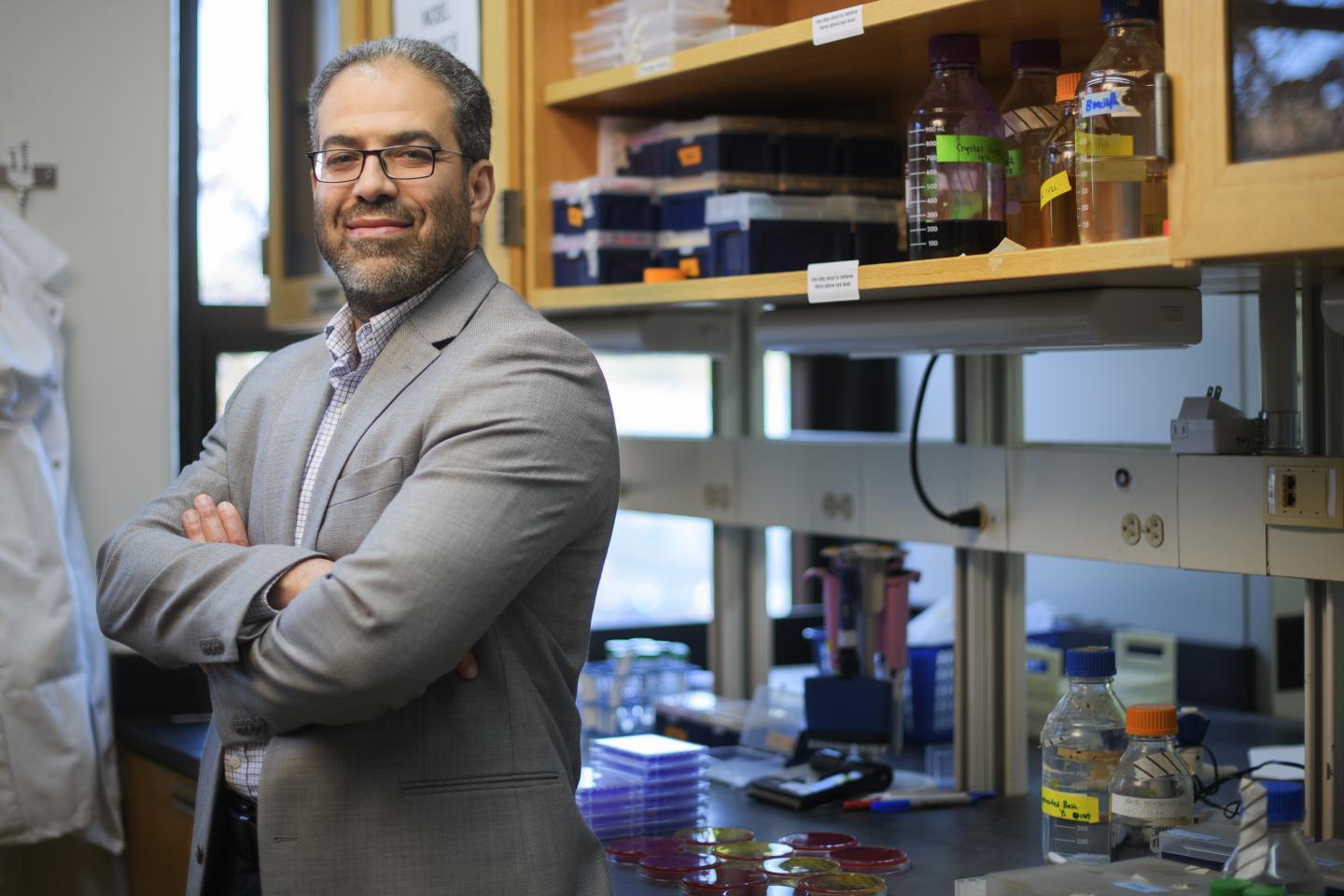MRSA, a superbug with the ability to dodge many common antibiotics, could be cured with blue light

Credit: Purdue University/Rebecca Wilcox
Methicillin-resistant Staphylococcus aureus (MRSA), a bacterium that causes infection in various parts of the body, is often called a “superbug” thanks to its ability to dodge many common antibiotics. Although most MRSA infections aren’t serious, some can be life-threatening, sometimes resulting in amputation of the infected appendage.
Rather than rolling the dice with a multi-drug combination or wasting precious time trying to determine which medicine to prescribe, doctors could soon use a new method for disarming the superbugs: light therapy.
Researchers at Purdue University and Boston University have discovered that exposing the bug to blue light can render it defenseless against antiseptics as mild as hydrogen peroxide. The findings were published in the journal Advanced Science.
“This new tool can treat any superficial wound infected with MRSA, which are typically very difficult to treat,” said Mohamed Seleem, a professor of microbiology at Purdue’s College of Veterinary Medicine. “The device itself is very small and easy to use. We’re hoping that in the next few years, anyone could carry it around in their purse.”
Compared with a Neutrogena light therapy mask for acne, know this is much more portable and sensible. It looks like a small box with a hole for light to come through, which contains the light to the wound.
Some bacteria, including certain strains of staph, produce pigments. These pigments are associated with the organism’s ability to damage the host, and if you know how to reduce the pigment, then, you might be able to reduce the organism’s activity in the body. This practice is known as photobleaching.
“When you bleach something in the wash machine, you’re extracting the color using chemicals. What we’re doing here is similar, but we’re using blue light,” said Seleem, who researches antimicrobial resistance and infectious disease.
After achieving promising results in vitro, the researchers exposed mice with MRSA-infected wounds to different wavelengths of light. The infections responded especially well to light in the blue region, and combined with a low-concentration hydrogen peroxide, were reduced significantly.
###
The technology is patented through Purdue’s Office of Technology Commercialization. Ji-Xin Cheng, a professor of biomedical engineering at Boston University, is working to arrange clinical trials through BU.
Media Contact
Kayla Zacharias
[email protected]
Original Source
https:/
Related Journal Article
http://dx.




